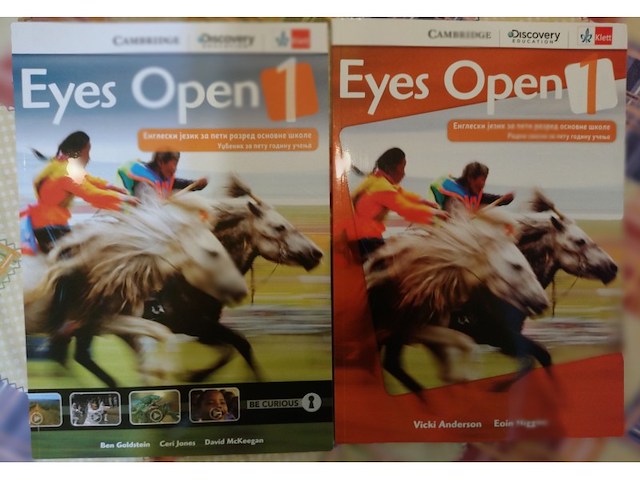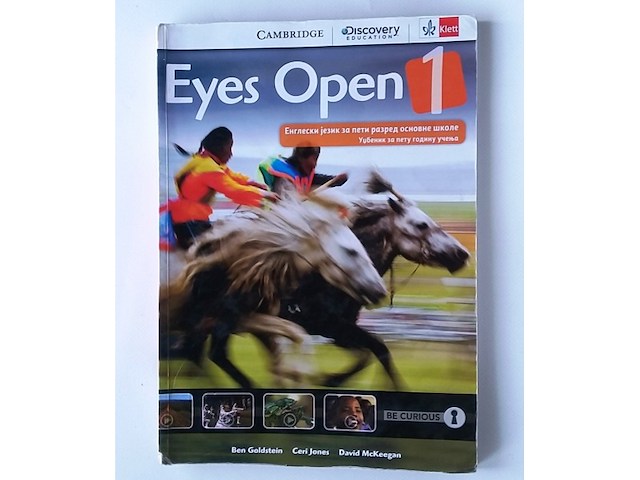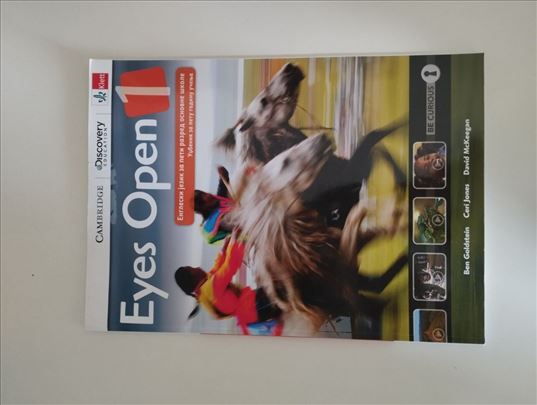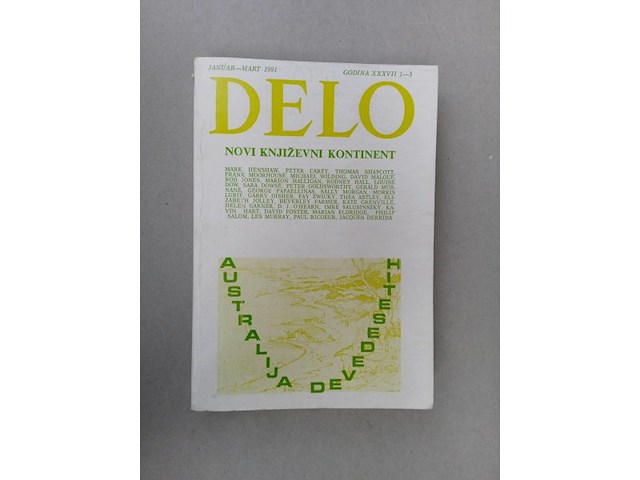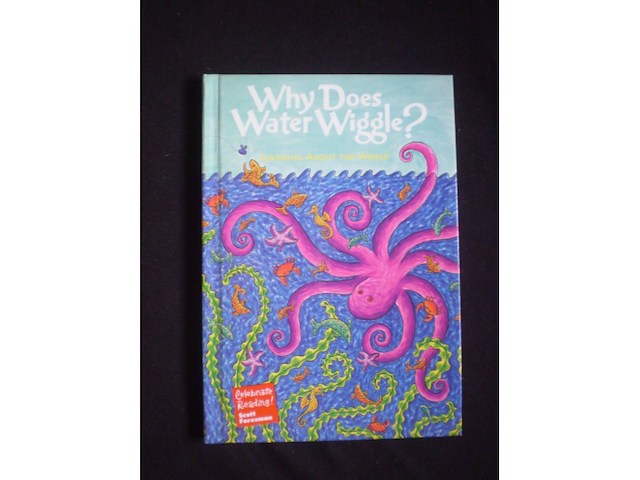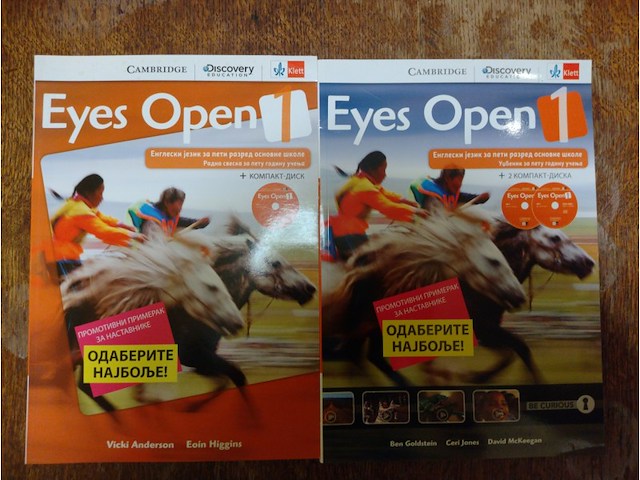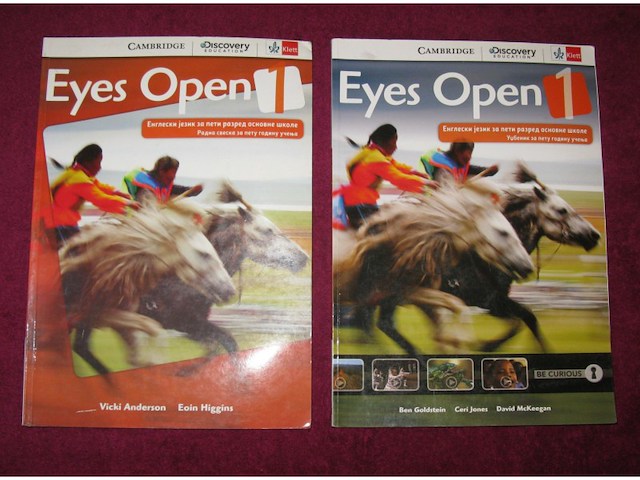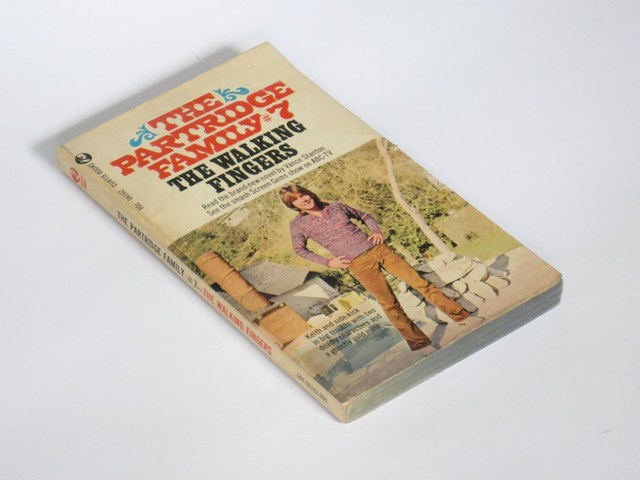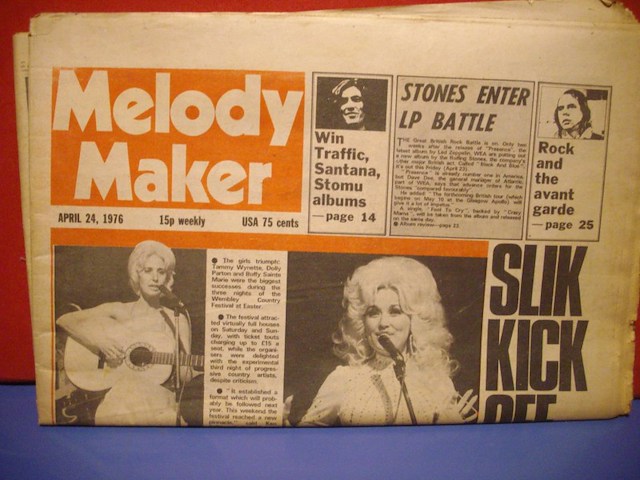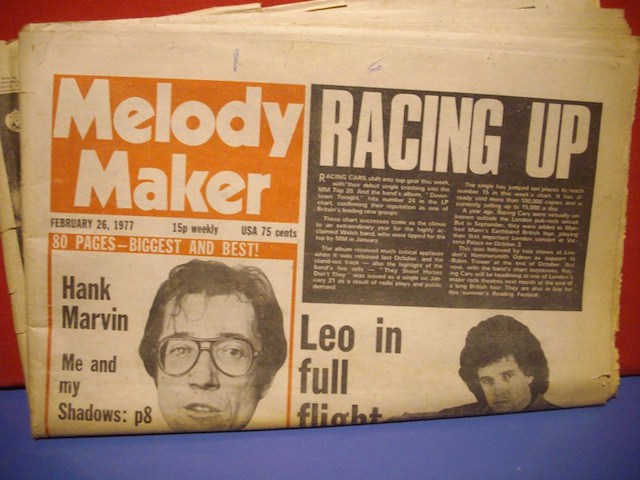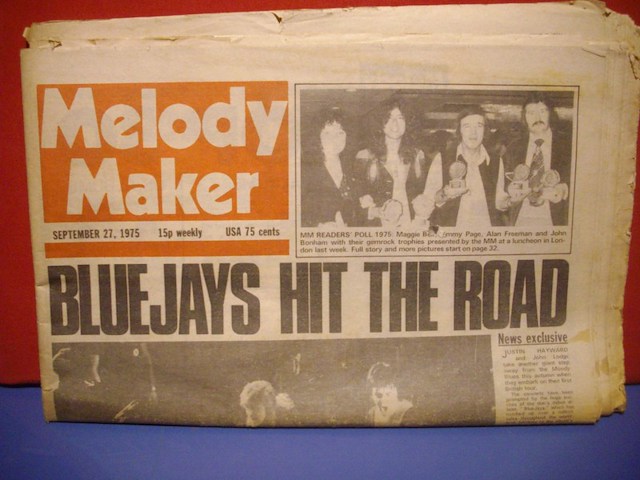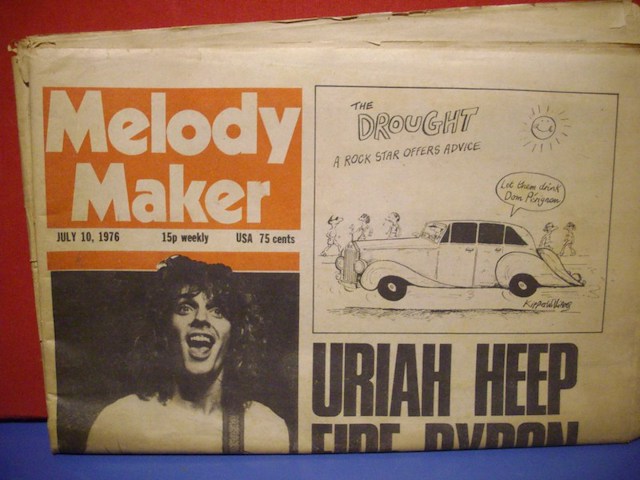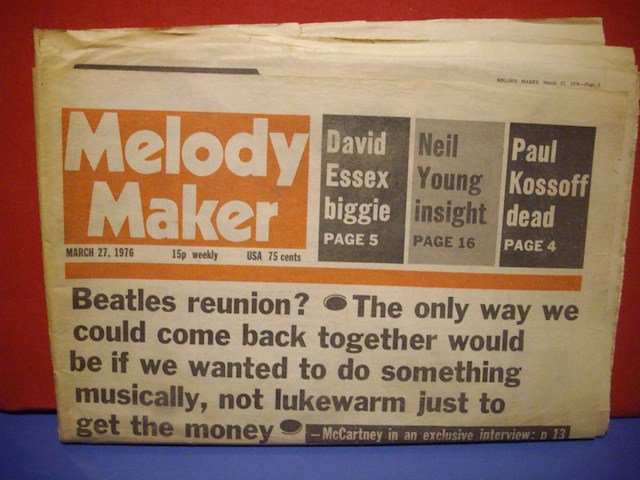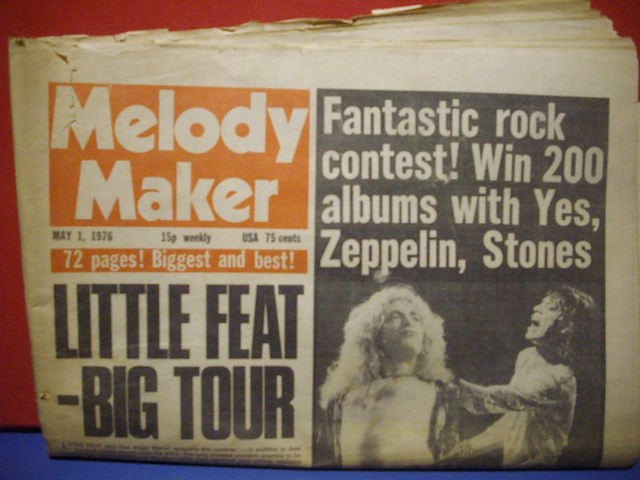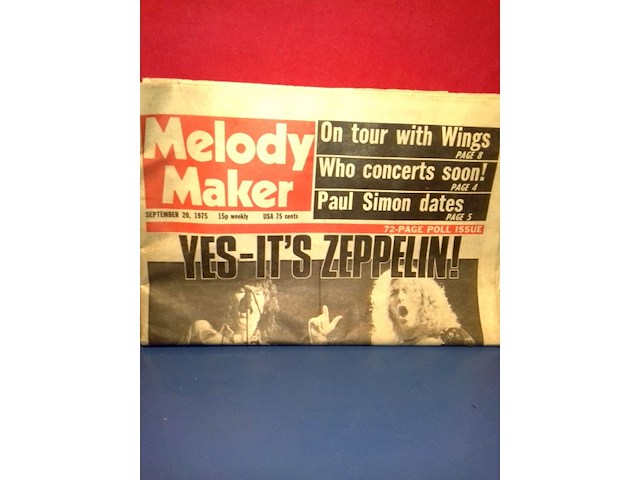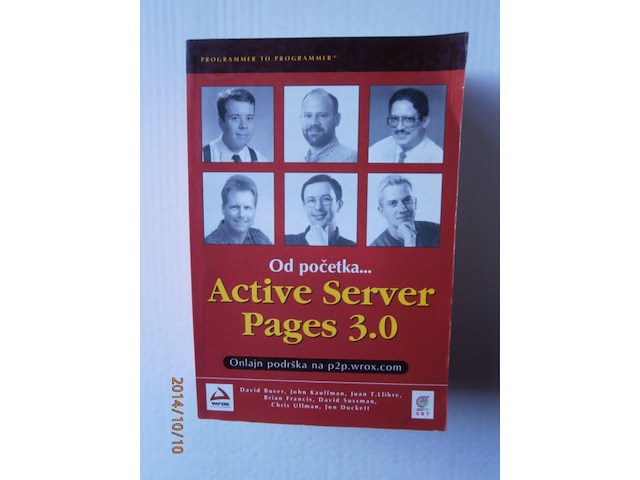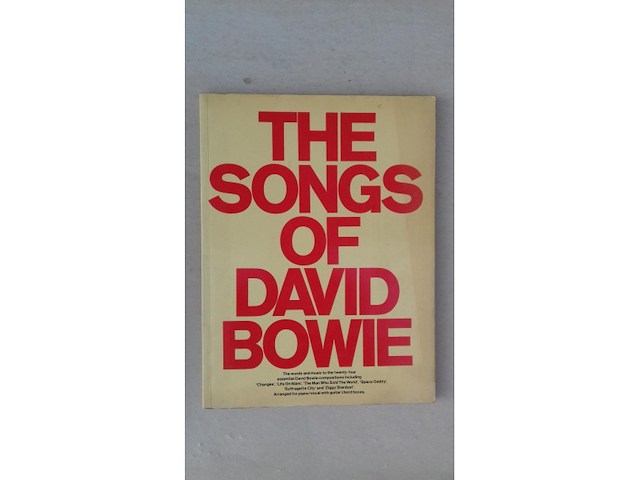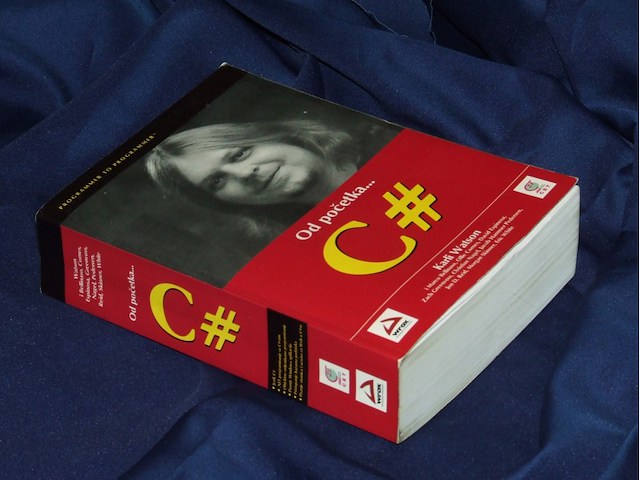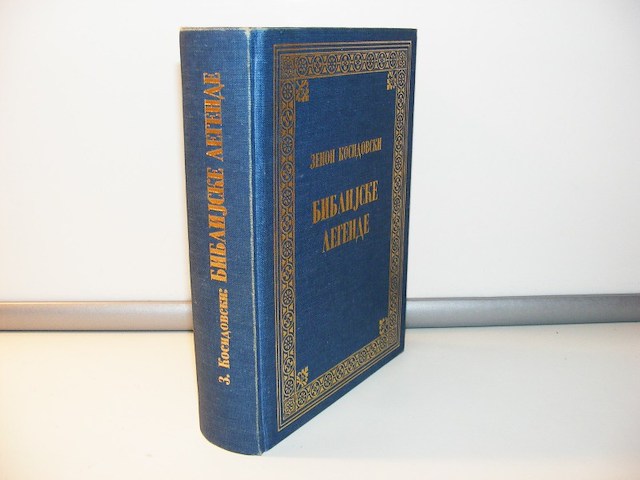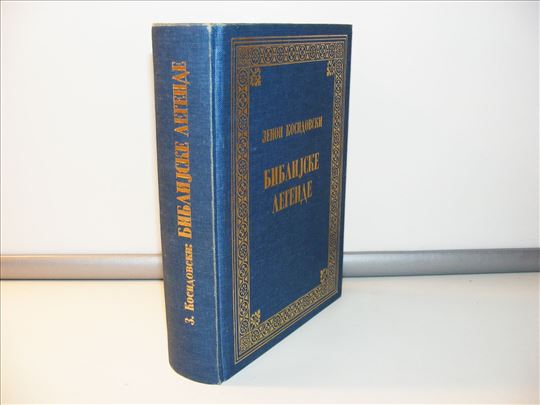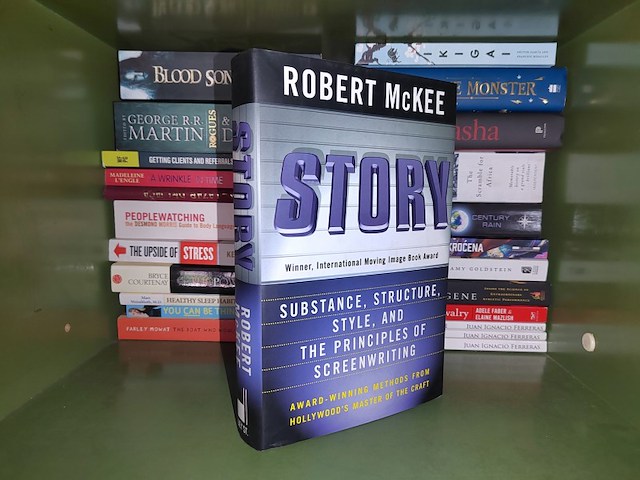Pratite promene cene putem maila
- Da bi dobijali obaveštenja o promeni cene potrebno je da kliknete Prati oglas dugme koje se nalazi na dnu svakog oglasa i unesete Vašu mail adresu.
1-25 od 67 rezultata
Prati pretragu "david jones"
Vi se opustite, Gogi će Vas obavestiti kad pronađe nove oglase za tražene ključne reči.
Gogi će vas obavestiti kada pronađe nove oglase.
Režim promene aktivan!
Upravo ste u režimu promene sačuvane pretrage za frazu .
Možete da promenite frazu ili filtere i sačuvate trenutno stanje
Aktivni filteri
-
Tag
Knjige
Ben Goldstein Ceri Jones David McKeegan Eyes Open 1 Engleski jezik za 5. razred osnovne škole Udžbenik za petu godinu učenja Nedostaju dva CD-a Klett d.o.o. , Beograd , 2020. 135 strana Meke korice Dimenzije knjige 21 x 29,5 cm Ima potpis običnom olovkom Vežbe popunjavane običnom olovkom Dobro očuvana knjiga
-
Kolekcionarstvo i umetnost chevron_right Knjige
Eyes open 1, udžbenik iz engleskog jezika za 5 raz Klet Namenjeno za: 5. razred Jezik: Engleski Izdavač: Klett Autor: Strani Predmet: Strani jezici Autori: Ben Goldstein, Ceri Jones, David Bolton Knjiga je kao nova. Za sve dodatne informacije pozovite telefonom, nisam u mogućnosti da redovno odgovaram na sms poruke. Hvala na razumevanju.
330 Spoljašnjost kao na fotografijama, unutrašnjost u dobrom i urednom stanju! Novi knjizevni kontinent Mark Henshaw Peter Carey Thomas Shapcott Frank Moorhouse Michael Wilding David Malof Rod Jones Marion Halligan Rodney Hall Louise Dow Sara Dowse Peter Goldsworthy Gerald Murnane George Papaellinas Sally Morgan Morris Lurie Garry Disher Fay Zwicky Thea Astley Elizabeth Jolley Beverley Farmer Kate Grenville Helen Garner D. J. Ohearn Imre Salusnszky Kavin Hart David Foster Marian Eldridge Philip Salom Les Murray Paul Ricoeur Jacques Derrida
WHY DOES WATER WIGGLE? LEARNING ABOUT THE WORLD - UČENJE O SVETU - Subject: Children`s Literature, English; Folklore; Poetry; Reading Elementary ; Reading Primary ,Author: Joanna Cole; Philip Cole; Gordon Penrose; Pat Mora; David Adler; Leslie Jones Little; Janet Stevens; Nancy Ross Ryan; Julius Lester; Jane Burton,Format: Hardcover,Publication - Publisher: ScottForesman Tvrd povez - 26cm, 128strana, ilustrovano STANJE ODLIČNO!!!
U PONUDI NOV NEKORIŠĆEN PROMOTIVNI KOMPLET `EYES OPEN 1` ENGLESKI JEZIK ZA 5. RAZRED OSNOVNE ŠKOLE`. KOMPLET SE SASTOJI OD UDŽBENIKA BEZ CD-a I RADNE SVESKE BEZ CD-a ZA PETU GODINU UČENJA. OD REDOVNOG KOMPLETA SE RAZLIKUJE SAMO PO NATPISU NA KORICAMA `PROMOTIVNI PRIMERAK ZA NASTAVNIKE ODABERITE NAJBOLJE `. PO NOVOM PLANU I PROGRAMU KOJI SE POČEO PRIMENJIVATI OD 2018.GODINE. IZGLED KAO NA PRILOŽENIM FOTOGRAFIJAMA. AUTORI SU BEN GOLDSTEIN, CERI JONES, DAVID McKEEGAN, VICKI ANDERSON I EOIN HIGGINS.
ENGLESKI JEZIK 5. EYES OPEN 1. UDŽBENIK + RADNA SVESKA Udžbenik i Radna sveska za peti razred osnovne škole, za petu godinu učenja Engleski jezik za 5. razred osnovne škole Autori udžbenika: Ben Godstein, Ceri Jones; David McKeegan Autori radne sveske: Vicki Anderson, Eoin Higgins Godina izdanja: 2018 Izdavač: Klett, Cambridge University Press Knjige su odlično očuvane, tragovi korišćenja minimalni i gotovo neprimetni: u udžbeniku je obrisano ono što je bilo pisano grafitnom olovkom, ostalo je netaknuto; u radnoj svesci na 3 stranice je par znakova (uglavnom na marginama) prekriveno korektorom, ostalo je besprekorno; pisano je po predlistu - stanje možete videti na fotografijama. Ne sadrže pripadajući CD. s2p
Vance Stanton - The Partridge Family #7: The Walking Fingers Curtis Books, New York, 1972 143 str. meki povez stanje: dobro, potpis na predlistu. Based on a series created by Bernard Slade. `From the TV Series starring Shirley Jones; If any group can do it, the Partridge family can! They`re a high-voltage six-pack of talent and energy - five groovy kids plus one beautiful, mini-skirted Mom - and they;ve settled down in the Top Ten for a long, long stay.` (TV Series lasted 96 episodes from 1970-1974); *** STARRING; Shirley Jones as Shirley Renfrew Partridge, David Cassidy as Keith Douglas Partridge, Susan Dey as Laurie Partridge, Danny Bonaduce as Danny Partridge, Suzanne Crough as Tracy Partridge, Dave Madden as Reuben Kincaid, Brian Forster as Christopher /Chris Partridge; ` *** David Cassidy as Keith Douglas Partridge PHOTO front & Back covers; Fiction
-
Kolekcionarstvo i umetnost chevron_right Muzika i film
Veliki format, presavijen Melody Maker was a British weekly music magazine, one of the world`s earliest music weeklies, and—according to its publisher IPC Media—the earliest.[2] It was founded in 1926, largely as a magazine for dance band musicians,[3] by Leicester-born composer, publisher Lawrence Wright; the first editor was Edgar Jackson.[4][5] In 2000 it was merged into `long-standing rival`[2] (and IPC Media sister publication) New Musical Express. By the early 1970s, Melody Maker was considered `the musos` journal` and associated with progressive rock. However, Melody Maker also reported on teenybopper pop sensations like the Osmonds, the Jackson 5, and David Cassidy. The music weekly also gave early and sympathetic coverage to glam rock. Richard Williams wrote the first pieces about Roxy Music, while Roy Hollingworth wrote the first article celebrating New York Dolls in proto-punk terms while serving as the Melody Maker`s New York correspondent. In January 1972, Michael `Mick` Watts, a prominent writer for the paper,[13] wrote a profile of David Bowie that almost singlehandedly ignited the singer`s dormant career.[14] During the interview Bowie claimed, `I`m gay, and always have been, even when I was David Jones.`[15] `OH YOU PRETTY THING` ran the headline, and swiftly became part of pop mythology. Bowie later attributed his success to this interview, stating that, `Yeah, it was Melody Maker that made me. It was that piece by Mick Watts.`[16] During his tenure at the paper, Watts also toured with and interviewed artists including Syd Barrett, Waylon Jennings, Pink Floyd, Bob Dylan and Bruce Springsteen. Caroline Coon was headhunted by Melody Maker editor Ray Coleman in the mid-1970s and promptly made it her mission to get women musicians taken seriously. Between 1974 and 1976, she interviewed Maggie Bell, Joan Armatrading, Lynsey de Paul, and Twiggy. She then went on to make it her mission to promote punk rock.[17] In 1978, Richard Williams returned – after a stint working at Island Records – to the paper as the new editor and attempted to take Melody Maker in a new direction, influenced by what Paul Morley and Ian Penman were doing at NME. He recruited Jon Savage (formerly of Sounds), Chris Bohn and Mary Harron to provide intellectual coverage of post-punk bands like Gang of Four, Pere Ubu and Joy Division and of new wave in general. Vivien Goldman, previously at NME and Sounds, gave the paper much improved coverage of reggae and soul music, restoring the superior coverage of those genres that the paper had in the early 1970s. Despite this promise of a new direction for the paper, internal tension developed, principally between Williams and Coleman, by this time editor-in-chief, who wanted the paper to stick to the more `conservative rock` music it had continued to support during the punk era. Coleman had been insistent that the paper should `look like The Daily Telegraph` (renowned for its old-fashioned design), but Williams wanted the paper to look more contemporary. He commissioned an updated design, but this was rejected by Coleman.
-
Kolekcionarstvo i umetnost chevron_right Muzika i film
Veliki format, presavijen Melody Maker was a British weekly music magazine, one of the world`s earliest music weeklies, and—according to its publisher IPC Media—the earliest.[2] It was founded in 1926, largely as a magazine for dance band musicians,[3] by Leicester-born composer, publisher Lawrence Wright; the first editor was Edgar Jackson.[4][5] In 2000 it was merged into `long-standing rival`[2] (and IPC Media sister publication) New Musical Express. By the early 1970s, Melody Maker was considered `the musos` journal` and associated with progressive rock. However, Melody Maker also reported on teenybopper pop sensations like the Osmonds, the Jackson 5, and David Cassidy. The music weekly also gave early and sympathetic coverage to glam rock. Richard Williams wrote the first pieces about Roxy Music, while Roy Hollingworth wrote the first article celebrating New York Dolls in proto-punk terms while serving as the Melody Maker`s New York correspondent. In January 1972, Michael `Mick` Watts, a prominent writer for the paper,[13] wrote a profile of David Bowie that almost singlehandedly ignited the singer`s dormant career.[14] During the interview Bowie claimed, `I`m gay, and always have been, even when I was David Jones.`[15] `OH YOU PRETTY THING` ran the headline, and swiftly became part of pop mythology. Bowie later attributed his success to this interview, stating that, `Yeah, it was Melody Maker that made me. It was that piece by Mick Watts.`[16] During his tenure at the paper, Watts also toured with and interviewed artists including Syd Barrett, Waylon Jennings, Pink Floyd, Bob Dylan and Bruce Springsteen. Caroline Coon was headhunted by Melody Maker editor Ray Coleman in the mid-1970s and promptly made it her mission to get women musicians taken seriously. Between 1974 and 1976, she interviewed Maggie Bell, Joan Armatrading, Lynsey de Paul, and Twiggy. She then went on to make it her mission to promote punk rock.[17] In 1978, Richard Williams returned – after a stint working at Island Records – to the paper as the new editor and attempted to take Melody Maker in a new direction, influenced by what Paul Morley and Ian Penman were doing at NME. He recruited Jon Savage (formerly of Sounds), Chris Bohn and Mary Harron to provide intellectual coverage of post-punk bands like Gang of Four, Pere Ubu and Joy Division and of new wave in general. Vivien Goldman, previously at NME and Sounds, gave the paper much improved coverage of reggae and soul music, restoring the superior coverage of those genres that the paper had in the early 1970s. Despite this promise of a new direction for the paper, internal tension developed, principally between Williams and Coleman, by this time editor-in-chief, who wanted the paper to stick to the more `conservative rock` music it had continued to support during the punk era. Coleman had been insistent that the paper should `look like The Daily Telegraph` (renowned for its old-fashioned design), but Williams wanted the paper to look more contemporary. He commissioned an updated design, but this was rejected by Coleman.
-
Kolekcionarstvo i umetnost chevron_right Muzika i film
Veliki format, presavijen Melody Maker was a British weekly music magazine, one of the world`s earliest music weeklies, and—according to its publisher IPC Media—the earliest.[2] It was founded in 1926, largely as a magazine for dance band musicians,[3] by Leicester-born composer, publisher Lawrence Wright; the first editor was Edgar Jackson.[4][5] In 2000 it was merged into `long-standing rival`[2] (and IPC Media sister publication) New Musical Express. By the early 1970s, Melody Maker was considered `the musos` journal` and associated with progressive rock. However, Melody Maker also reported on teenybopper pop sensations like the Osmonds, the Jackson 5, and David Cassidy. The music weekly also gave early and sympathetic coverage to glam rock. Richard Williams wrote the first pieces about Roxy Music, while Roy Hollingworth wrote the first article celebrating New York Dolls in proto-punk terms while serving as the Melody Maker`s New York correspondent. In January 1972, Michael `Mick` Watts, a prominent writer for the paper,[13] wrote a profile of David Bowie that almost singlehandedly ignited the singer`s dormant career.[14] During the interview Bowie claimed, `I`m gay, and always have been, even when I was David Jones.`[15] `OH YOU PRETTY THING` ran the headline, and swiftly became part of pop mythology. Bowie later attributed his success to this interview, stating that, `Yeah, it was Melody Maker that made me. It was that piece by Mick Watts.`[16] During his tenure at the paper, Watts also toured with and interviewed artists including Syd Barrett, Waylon Jennings, Pink Floyd, Bob Dylan and Bruce Springsteen. Caroline Coon was headhunted by Melody Maker editor Ray Coleman in the mid-1970s and promptly made it her mission to get women musicians taken seriously. Between 1974 and 1976, she interviewed Maggie Bell, Joan Armatrading, Lynsey de Paul, and Twiggy. She then went on to make it her mission to promote punk rock.[17] In 1978, Richard Williams returned – after a stint working at Island Records – to the paper as the new editor and attempted to take Melody Maker in a new direction, influenced by what Paul Morley and Ian Penman were doing at NME. He recruited Jon Savage (formerly of Sounds), Chris Bohn and Mary Harron to provide intellectual coverage of post-punk bands like Gang of Four, Pere Ubu and Joy Division and of new wave in general. Vivien Goldman, previously at NME and Sounds, gave the paper much improved coverage of reggae and soul music, restoring the superior coverage of those genres that the paper had in the early 1970s. Despite this promise of a new direction for the paper, internal tension developed, principally between Williams and Coleman, by this time editor-in-chief, who wanted the paper to stick to the more `conservative rock` music it had continued to support during the punk era. Coleman had been insistent that the paper should `look like The Daily Telegraph` (renowned for its old-fashioned design), but Williams wanted the paper to look more contemporary. He commissioned an updated design, but this was rejected by Coleman.
-
Kolekcionarstvo i umetnost chevron_right Muzika i film
Veliki format, presavijen Melody Maker was a British weekly music magazine, one of the world`s earliest music weeklies, and—according to its publisher IPC Media—the earliest.[2] It was founded in 1926, largely as a magazine for dance band musicians,[3] by Leicester-born composer, publisher Lawrence Wright; the first editor was Edgar Jackson.[4][5] In 2000 it was merged into `long-standing rival`[2] (and IPC Media sister publication) New Musical Express. By the early 1970s, Melody Maker was considered `the musos` journal` and associated with progressive rock. However, Melody Maker also reported on teenybopper pop sensations like the Osmonds, the Jackson 5, and David Cassidy. The music weekly also gave early and sympathetic coverage to glam rock. Richard Williams wrote the first pieces about Roxy Music, while Roy Hollingworth wrote the first article celebrating New York Dolls in proto-punk terms while serving as the Melody Maker`s New York correspondent. In January 1972, Michael `Mick` Watts, a prominent writer for the paper,[13] wrote a profile of David Bowie that almost singlehandedly ignited the singer`s dormant career.[14] During the interview Bowie claimed, `I`m gay, and always have been, even when I was David Jones.`[15] `OH YOU PRETTY THING` ran the headline, and swiftly became part of pop mythology. Bowie later attributed his success to this interview, stating that, `Yeah, it was Melody Maker that made me. It was that piece by Mick Watts.`[16] During his tenure at the paper, Watts also toured with and interviewed artists including Syd Barrett, Waylon Jennings, Pink Floyd, Bob Dylan and Bruce Springsteen. Caroline Coon was headhunted by Melody Maker editor Ray Coleman in the mid-1970s and promptly made it her mission to get women musicians taken seriously. Between 1974 and 1976, she interviewed Maggie Bell, Joan Armatrading, Lynsey de Paul, and Twiggy. She then went on to make it her mission to promote punk rock.[17] In 1978, Richard Williams returned – after a stint working at Island Records – to the paper as the new editor and attempted to take Melody Maker in a new direction, influenced by what Paul Morley and Ian Penman were doing at NME. He recruited Jon Savage (formerly of Sounds), Chris Bohn and Mary Harron to provide intellectual coverage of post-punk bands like Gang of Four, Pere Ubu and Joy Division and of new wave in general. Vivien Goldman, previously at NME and Sounds, gave the paper much improved coverage of reggae and soul music, restoring the superior coverage of those genres that the paper had in the early 1970s. Despite this promise of a new direction for the paper, internal tension developed, principally between Williams and Coleman, by this time editor-in-chief, who wanted the paper to stick to the more `conservative rock` music it had continued to support during the punk era. Coleman had been insistent that the paper should `look like The Daily Telegraph` (renowned for its old-fashioned design), but Williams wanted the paper to look more contemporary. He commissioned an updated design, but this was rejected by Coleman.
-
Kolekcionarstvo i umetnost chevron_right Muzika i film
Veliki format, presavijen Melody Maker was a British weekly music magazine, one of the world`s earliest music weeklies, and—according to its publisher IPC Media—the earliest.[2] It was founded in 1926, largely as a magazine for dance band musicians,[3] by Leicester-born composer, publisher Lawrence Wright; the first editor was Edgar Jackson.[4][5] In 2000 it was merged into `long-standing rival`[2] (and IPC Media sister publication) New Musical Express. By the early 1970s, Melody Maker was considered `the musos` journal` and associated with progressive rock. However, Melody Maker also reported on teenybopper pop sensations like the Osmonds, the Jackson 5, and David Cassidy. The music weekly also gave early and sympathetic coverage to glam rock. Richard Williams wrote the first pieces about Roxy Music, while Roy Hollingworth wrote the first article celebrating New York Dolls in proto-punk terms while serving as the Melody Maker`s New York correspondent. In January 1972, Michael `Mick` Watts, a prominent writer for the paper,[13] wrote a profile of David Bowie that almost singlehandedly ignited the singer`s dormant career.[14] During the interview Bowie claimed, `I`m gay, and always have been, even when I was David Jones.`[15] `OH YOU PRETTY THING` ran the headline, and swiftly became part of pop mythology. Bowie later attributed his success to this interview, stating that, `Yeah, it was Melody Maker that made me. It was that piece by Mick Watts.`[16] During his tenure at the paper, Watts also toured with and interviewed artists including Syd Barrett, Waylon Jennings, Pink Floyd, Bob Dylan and Bruce Springsteen. Caroline Coon was headhunted by Melody Maker editor Ray Coleman in the mid-1970s and promptly made it her mission to get women musicians taken seriously. Between 1974 and 1976, she interviewed Maggie Bell, Joan Armatrading, Lynsey de Paul, and Twiggy. She then went on to make it her mission to promote punk rock.[17] In 1978, Richard Williams returned – after a stint working at Island Records – to the paper as the new editor and attempted to take Melody Maker in a new direction, influenced by what Paul Morley and Ian Penman were doing at NME. He recruited Jon Savage (formerly of Sounds), Chris Bohn and Mary Harron to provide intellectual coverage of post-punk bands like Gang of Four, Pere Ubu and Joy Division and of new wave in general. Vivien Goldman, previously at NME and Sounds, gave the paper much improved coverage of reggae and soul music, restoring the superior coverage of those genres that the paper had in the early 1970s. Despite this promise of a new direction for the paper, internal tension developed, principally between Williams and Coleman, by this time editor-in-chief, who wanted the paper to stick to the more `conservative rock` music it had continued to support during the punk era. Coleman had been insistent that the paper should `look like The Daily Telegraph` (renowned for its old-fashioned design), but Williams wanted the paper to look more contemporary. He commissioned an updated design, but this was rejected by Coleman.
-
Kolekcionarstvo i umetnost chevron_right Muzika i film
Veliki format, presavijen Melody Maker was a British weekly music magazine, one of the world`s earliest music weeklies, and—according to its publisher IPC Media—the earliest.[2] It was founded in 1926, largely as a magazine for dance band musicians,[3] by Leicester-born composer, publisher Lawrence Wright; the first editor was Edgar Jackson.[4][5] In 2000 it was merged into `long-standing rival`[2] (and IPC Media sister publication) New Musical Express. By the early 1970s, Melody Maker was considered `the musos` journal` and associated with progressive rock. However, Melody Maker also reported on teenybopper pop sensations like the Osmonds, the Jackson 5, and David Cassidy. The music weekly also gave early and sympathetic coverage to glam rock. Richard Williams wrote the first pieces about Roxy Music, while Roy Hollingworth wrote the first article celebrating New York Dolls in proto-punk terms while serving as the Melody Maker`s New York correspondent. In January 1972, Michael `Mick` Watts, a prominent writer for the paper,[13] wrote a profile of David Bowie that almost singlehandedly ignited the singer`s dormant career.[14] During the interview Bowie claimed, `I`m gay, and always have been, even when I was David Jones.`[15] `OH YOU PRETTY THING` ran the headline, and swiftly became part of pop mythology. Bowie later attributed his success to this interview, stating that, `Yeah, it was Melody Maker that made me. It was that piece by Mick Watts.`[16] During his tenure at the paper, Watts also toured with and interviewed artists including Syd Barrett, Waylon Jennings, Pink Floyd, Bob Dylan and Bruce Springsteen. Caroline Coon was headhunted by Melody Maker editor Ray Coleman in the mid-1970s and promptly made it her mission to get women musicians taken seriously. Between 1974 and 1976, she interviewed Maggie Bell, Joan Armatrading, Lynsey de Paul, and Twiggy. She then went on to make it her mission to promote punk rock.[17] In 1978, Richard Williams returned – after a stint working at Island Records – to the paper as the new editor and attempted to take Melody Maker in a new direction, influenced by what Paul Morley and Ian Penman were doing at NME. He recruited Jon Savage (formerly of Sounds), Chris Bohn and Mary Harron to provide intellectual coverage of post-punk bands like Gang of Four, Pere Ubu and Joy Division and of new wave in general. Vivien Goldman, previously at NME and Sounds, gave the paper much improved coverage of reggae and soul music, restoring the superior coverage of those genres that the paper had in the early 1970s. Despite this promise of a new direction for the paper, internal tension developed, principally between Williams and Coleman, by this time editor-in-chief, who wanted the paper to stick to the more `conservative rock` music it had continued to support during the punk era. Coleman had been insistent that the paper should `look like The Daily Telegraph` (renowned for its old-fashioned design), but Williams wanted the paper to look more contemporary. He commissioned an updated design, but this was rejected by Coleman.
-
Kolekcionarstvo i umetnost chevron_right Muzika i film
Veliki format, presavijen, kompletan Melody Maker was a British weekly music magazine, one of the world`s earliest music weeklies, and—according to its publisher IPC Media—the earliest.[2] It was founded in 1926, largely as a magazine for dance band musicians,[3] by Leicester-born composer, publisher Lawrence Wright; the first editor was Edgar Jackson.[4][5] In 2000 it was merged into `long-standing rival`[2] (and IPC Media sister publication) New Musical Express. By the early 1970s, Melody Maker was considered `the musos` journal` and associated with progressive rock. However, Melody Maker also reported on teenybopper pop sensations like the Osmonds, the Jackson 5, and David Cassidy. The music weekly also gave early and sympathetic coverage to glam rock. Richard Williams wrote the first pieces about Roxy Music, while Roy Hollingworth wrote the first article celebrating New York Dolls in proto-punk terms while serving as the Melody Maker`s New York correspondent. In January 1972, Michael `Mick` Watts, a prominent writer for the paper,[13] wrote a profile of David Bowie that almost singlehandedly ignited the singer`s dormant career.[14] During the interview Bowie claimed, `I`m gay, and always have been, even when I was David Jones.`[15] `OH YOU PRETTY THING` ran the headline, and swiftly became part of pop mythology. Bowie later attributed his success to this interview, stating that, `Yeah, it was Melody Maker that made me. It was that piece by Mick Watts.`[16] During his tenure at the paper, Watts also toured with and interviewed artists including Syd Barrett, Waylon Jennings, Pink Floyd, Bob Dylan and Bruce Springsteen. Caroline Coon was headhunted by Melody Maker editor Ray Coleman in the mid-1970s and promptly made it her mission to get women musicians taken seriously. Between 1974 and 1976, she interviewed Maggie Bell, Joan Armatrading, Lynsey de Paul, and Twiggy. She then went on to make it her mission to promote punk rock.[17] In 1978, Richard Williams returned – after a stint working at Island Records – to the paper as the new editor and attempted to take Melody Maker in a new direction, influenced by what Paul Morley and Ian Penman were doing at NME. He recruited Jon Savage (formerly of Sounds), Chris Bohn and Mary Harron to provide intellectual coverage of post-punk bands like Gang of Four, Pere Ubu and Joy Division and of new wave in general. Vivien Goldman, previously at NME and Sounds, gave the paper much improved coverage of reggae and soul music, restoring the superior coverage of those genres that the paper had in the early 1970s. Despite this promise of a new direction for the paper, internal tension developed, principally between Williams and Coleman, by this time editor-in-chief, who wanted the paper to stick to the more `conservative rock` music it had continued to support during the punk era. Coleman had been insistent that the paper should `look like The Daily Telegraph` (renowned for its old-fashioned design), but Williams wanted the paper to look more contemporary. He commissioned an updated design, but this was rejected by Coleman.
-
Kolekcionarstvo i umetnost chevron_right Muzika i film
Veliki format, presavijen Melody Maker was a British weekly music magazine, one of the world`s earliest music weeklies, and—according to its publisher IPC Media—the earliest.[2] It was founded in 1926, largely as a magazine for dance band musicians,[3] by Leicester-born composer, publisher Lawrence Wright; the first editor was Edgar Jackson.[4][5] In 2000 it was merged into `long-standing rival`[2] (and IPC Media sister publication) New Musical Express. By the early 1970s, Melody Maker was considered `the musos` journal` and associated with progressive rock. However, Melody Maker also reported on teenybopper pop sensations like the Osmonds, the Jackson 5, and David Cassidy. The music weekly also gave early and sympathetic coverage to glam rock. Richard Williams wrote the first pieces about Roxy Music, while Roy Hollingworth wrote the first article celebrating New York Dolls in proto-punk terms while serving as the Melody Maker`s New York correspondent. In January 1972, Michael `Mick` Watts, a prominent writer for the paper,[13] wrote a profile of David Bowie that almost singlehandedly ignited the singer`s dormant career.[14] During the interview Bowie claimed, `I`m gay, and always have been, even when I was David Jones.`[15] `OH YOU PRETTY THING` ran the headline, and swiftly became part of pop mythology. Bowie later attributed his success to this interview, stating that, `Yeah, it was Melody Maker that made me. It was that piece by Mick Watts.`[16] During his tenure at the paper, Watts also toured with and interviewed artists including Syd Barrett, Waylon Jennings, Pink Floyd, Bob Dylan and Bruce Springsteen. Caroline Coon was headhunted by Melody Maker editor Ray Coleman in the mid-1970s and promptly made it her mission to get women musicians taken seriously. Between 1974 and 1976, she interviewed Maggie Bell, Joan Armatrading, Lynsey de Paul, and Twiggy. She then went on to make it her mission to promote punk rock.[17] In 1978, Richard Williams returned – after a stint working at Island Records – to the paper as the new editor and attempted to take Melody Maker in a new direction, influenced by what Paul Morley and Ian Penman were doing at NME. He recruited Jon Savage (formerly of Sounds), Chris Bohn and Mary Harron to provide intellectual coverage of post-punk bands like Gang of Four, Pere Ubu and Joy Division and of new wave in general. Vivien Goldman, previously at NME and Sounds, gave the paper much improved coverage of reggae and soul music, restoring the superior coverage of those genres that the paper had in the early 1970s. Despite this promise of a new direction for the paper, internal tension developed, principally between Williams and Coleman, by this time editor-in-chief, who wanted the paper to stick to the more `conservative rock` music it had continued to support during the punk era. Coleman had been insistent that the paper should `look like The Daily Telegraph` (renowned for its old-fashioned design), but Williams wanted the paper to look more contemporary. He commissioned an updated design, but this was rejected by Coleman.
Autor: David Buser, John Kauffman, Juan T. Llibre, Brian Francis, David Sussman, Chris Ullman, Jon Duckett Izdavac: CET - Beograd, 2001. Mek povez, 1198 str. nepodvlačena Pored detaljnog upoznavanja sa ASP tehnologijom, ova knjiga se bavi i novim razvojnim pravcima i integrisanjem ASP-a u najnovije verzije postojecih savremenih tehnologija kao sto su ADO, COM+ i XML. Cilj ove knjige je da korisnike osposobi da prave izazovne i prakticne Web aplikacije, sa inteligentnim, dinamickim stranicama. ASP je buducnost mreze, a ova knjiga kao idealan prvi korak za sve koji traze praktican i konkretan uvod u ASP i programiranje za Web, obuhvata: VBScript kao integralni dio obuke za ucenje ASP-a. Dinamicnije stranice uz pomoc HTML-a. Postavljanje ASP-a, koji se softver koristi i kako se administriraju stranice. Objektno orijentisano programiranje i koriscenje ASP objekata. Potpuno razradjen primjer aplikacije na kome je pokazana sva moc ASP-a; i jos mnogo toga... Kratak sadrzaj: Uvod 1 Pocetak rada sa ASP-om 2 Skriptovanje na strani servera i skriptovanje na strani klijenta 3 Osnovne ASP tehnike 4 Promenljive 5 ASP kontrolne strukture 6 Objekti, svojstva, metodi i dogadaji 7 Objekti Request i Response 8 Aplikacije, sesije i kolacici 9 Obrada gresaka 10 Skripting objekti 11 Active Server Pages komponente 12 ASP i pristup spremistu podataka 13 Koriscenje skupova zapisa 14 Napredne tehnike obrade podataka 15 Pisanje aplikacije 16 Formiranje skript komponenti za ASP 17 Uvod u transakcije i COM+ 18 Uvod u XML Dodatak A: ASP 3.0 objektni model Dodatak B: Objekti Scripting biblioteke izvrsnih rutina Dodatak C: Objektni model ADO 2.5 Dodatak D: Referentni prirucnik za VB Script Dodatak E: Saveti Johna Kauffmana za instalaciju Personal Web Servera na Win 9x plaformama Dodatak F: Formulari i ASP Dodatak G: Kodovi gresaka Dodatak H: Kodovi boja I specijalnih znakova u HTML-u POGLEDAJTE I OSTALE KNJIGE KOJE PRODAJEM KLIKNITE NA LINK http://www.kupindo.com/pretraga.php?Pretraga=&CeleReci=1&Prodavac=madena&Grupa=1&sSort=cena&sSmer=DESC 12
-
Kolekcionarstvo i umetnost chevron_right Knjige
Detalji predmeta Stanje Polovno Publisher : Baen Language : English Mass Market Paperback : 960 pages A mammoth volume (over 250,000 words) of the many facets of one of science fiction’s most popular talents. Here are treecats, starships, dragons, alternate history, self-aware Bolo supertanks, wizards, sailing ships, ironclads—and, of course, Weber’s fantastically popular starship commander, Honor Harrington. For nearly two decades, David Weber has been taking enthralled readers to destinations strange and fantastical, from his best-selling Honor Harrington novels and short stories to the heroic fantasy of Bahzell of the Hrandai, and the shared universe stories set in worlds of his own creation, and those of others, such as Eric Flint’s best-selling Ring of Fire series, the popular Bolo series of Keith Laumer and more. Visit 17th-century Magdeburg for the creation of the United States Navy a hundred and fifty years early, and go with John Paul Jones as he wins the Revolutionary War—For George III. Fight dragons and demons with U.S. Marines in a most unexpected campaign, find out how humans and treecats first met and share Honor Harrington’s very first battle. But once you step into the worlds of Weber, you may not want to go home again. ------------------- Solidno očuvano. Pogledajte slike. Šaljem poštom, preporučeno, kao tiskovinu, u običnim kovertama, pri čemu je poštarina 200 dinara. Može i lično preuzimanje naravno (radnim danima, kod prve ekonomske škole). Račun je u Banca Intesi. Ne šaljem pouzećem.
BIBLIOTEKA LEKTIRA 1- 8 tvrdi povez Veselin Masleša 1975/82 1 DRAME IBZEN -LUTKINA KUĆA,SABLASTIDIVLJA PATKA 2. DRAME IBZEN - ROSMERSHOLM, HEDA GABLER, JON GABRIEL BORKMAN 3. VASKRSENJE - TOLSTOJ 4- CRVENO I CRNO - STENDAL 5. DAVID KOPERFILD - DIKENS 6.DAVID KOPERFILD 2 DIKENS 7.LOVČEVI ZAPISI - TURGENJEV 8.JUNAK NAŠEG DOBA - LJERMONTOV Stanje vrlo dobro HOD. L
-
Kolekcionarstvo i umetnost chevron_right Knjige
U dobrom stanju! Na engleskom jeziku! Dvadeset i četiri osnovne kompozicije Davida Bovieja, plus deset fotografija na punoj stranici. Dogovoreno za klavir / vokal, sa kutijama i akordima gitare. Naslovi su: `Sva luđaka`, `Svi mladi ljudi`, `Andi Varhol`, `Bevlai Brothers`, `Changes`, `Cignet Co.... Dejvid Robert Hejvord-Džouns (engl. David Robert Hayward-Jones; 8. januar 1947 — 10. januar 2016), poznat pod pseudonimom Dejvid Boui (engl. David Bowie), bio je jedan je od najpoznatijih britanskih rok muzičara, pevača, kompozitora i glumaca. Bouijeva muzička karijera trajala je više od pet decenija, a bio je sklon stalnom menjanju muzičkog stila i imidža, naročito od 1970. godine.[1] Preminuo je 10. januara 2016. godine[2], posle osamnaestomesečne borbe sa rakom jetre. Boui je rođen kao Dejvid Robert Džouns 8. januara 1947. godine u Brikstonu. Njegova majka, Margaret Meri „Pegi” (1913 – 2001.)[3][4] je rođena u vojnom kampu Šornklif, pored Čeritona u Kentu. Roditelji njenog oca su bili irski imigranti koji su se naselili u Mančester. Ona je radila kao konobarica u bioskopu Rojal Tanbridž Vels.[5] Njegov otac Hejvud Stenton „Džon” Džouns (1912–1969) je bio iz Donkastera i radio je kao promoter za dečiju humanitarnu organizaciju Bernando. Porodica je živela na granici između Brikstona i Stokvela u južnom Londonskom okrugu Lambet. Boui je pohađao školu za decu Stokvel do šestogodišnjeg doba i tada je dobio reputaciju nadarenog, jednoobraznog deteta i prkosne svađalice.[6] Boui se preselio sa porodicom u Bromli. Dve godine kasnije, započeo je pohađanje Brnt Eš osnovne škole. Školski hor je smatrao da ima „adekvatan” glas, a pokazao je nadprosečne veštine sviranja flaute. Kada je imao devet godina, njegov ples na časovima pokreta je bio veoma maštovit, toliko da su nastavnici nazivali njegove interpretacije „živopisno umetničkim”, a njegov stil „zadivljujućim” za dete.[6] Iste godine, porastao je njegov interes za muziku kada mu je otac kupio kolekciju ploča među kojima su bile ploče grupa Tinejdžers, Platers, Fets Domino, Elvis Prisli i Litl Ričard. Nakon slušanja pesme Litl Ričarda Tutti Frutti, Boui je kasnije rekao da je tada „čuo Boga”.[7] Boui je studirao umetnost, muziku i dizajn. Njegov polubrat Teri Berns je uticao na njegov entuzijazam kada je reč o džez muzici. Boui je tada naročito bio zainteresovan za Čarlsa Mingusa i Džona Koltrejna, zbog čega mu je majka kupila Grafton saksofon 1961. godine. Nakon toga je započeo časove kod baritona saksofoniste Ronija Rosa.[8] U školi je 1962. godine zadobio ozbiljne povrede oka kada se posvađao sa Džordžom Andervudom oko devojke. Imao je nekoliko operacija tokom petomesečnog perioda.[9] Tada mu je doktor rekao da šteta ne može u potpunosti biti otklonjena, zbog čega je Boui imao pogrešnu percepciju dubine i promenu u boji oka. Ovakvo oko je kasnije postalo najprepoznatljiviji znak Bouija.[10] Uprkos svađi, Boui je ostao u dobrim odnosima sa Andervudom, koji je kreirao umetnička dela za Bouijeve ranije albume. Muzičar Boui 1975. godine Najranija pesma kojom se proslavio bio je singl Space Oddity iz 1969, koji je zbog spuštanja na Mesec imao velik uspeh. Najznačajniji Bouijev album bio je The Rise and The Fall of Ziggy Stardust and The Spiders From Mars. To je bio konceptualni album sa pričom o vanzemaljcu koji dolazi na Zemlju, postaje megazvezda a na kraju ga ubijaju obožavaoci. Zaštitni znak turneje bio je ogromni stakleni pauk, posebno izrađen za tu priliku. Turneju za album `Rijaliti`(2005), morao je da prekine zbog manjeg srčanog udara. Diskografija David Bowie (1967) Space Oddity (1969, 1972 ponovno izdanje UK #17, US #16) The Man Who Sold the World (1970, 1972 ponovno izdanje UK #26) Hunky Dory (1971, US #93, 1972 ponovno izdanje UK #3) The Rise and Fall of Ziggy Stardust and the Spiders from Mars (1972, UK #5, US #75) Aladdin Sane (1973, UK #1, US #17) Pin Ups (1973, UK #1, US #23) Diamond Dogs (1974, UK #1, US #5) Young Americans (1975, UK #1, US #9) Station to Station (1976, UK #5, US #3) Low (1977, UK #2, US #11) Heroes (1977, UK #3, US #35) Lodger (1979, UK #4, US #20) Scary Monsters (and Super Creeps) (1980, UK #1 US #12) Let`s Dance (1983, UK #1, US #1) Tonight (1984, UK #1, US #11) Never Let Me Down (1987, UK #6, US #34) Black Tie White Noise (1993, UK #1, US #39) The Buddha of Suburbia (1993, UK #87) 1.OUTSIDE (1995, UK #8, US #21) Earthling (1997, UK #6, US #39) `hours...` (1999, UK #5, US #47) Heathen (2002, UK #5, US #14) Reality (2003, UK #3, US #29) The Next Day (2013) Blackstar (2016) Smrt Sa suprugom Iman (2009) Cveće ispred Bouijevog apartmana u Njujorku, januar 2016. Boui je preminuo od raka jetre, 10. januara 2016. godine, samo dva dana nakon 69. rođendana i izdavanja albuma Blackstar.[11] Rak mu je dijagnostikovan 18 meseci ranije, ali nije iznosio ove vesti u javnost.[12] Belgijski pozorišni reditelj, Ivo van Hov, koji je radio sa pevačem na mjuziklu Lazarus, izjavio je da Boui nije mogao da dođe na probe zbog progresije bolesti. Takođe je rekao da je pevač radio i tokom bolesti.[13] Bouijev producent Toni Viskonti je napisao:[14][15] Uvek je radio ono što je hteo. I radio je to na svoj način i najbolje moguće. Njegova smrt se ne razlikuje od njegovog života - umetničko delo. Napravio je Blekstar za nas kao oproštajni poklon. Znao sam oko godinu dana da će ovako biti. Međutim, nisam bio spreman za to. Bio je izuzetan čovek, pun ljubavi i života. On će uvek biti sa nama. Za sada je prikladno plakati. — Toni Viskonti Nakon njegove smrti, fanovi su se okupili, položili cveće kod njegovog murala u rodnom gradu Brikstonu i pevali njegove pesme. Spomen obeležja nalaze se i u Berlinu, Los Anđelesu i kod njegovog apartmana u Njujorku. Posle njegove smrti, porasla je prodaja albuma.[16] Boui je insistirao da ne želi sahranu pa je kremiran u Nju Džerziju 12. januara.[17] Po njegovoj želji, pepeo je prosut na Baliju, u Indoneziji
Prevod originalnog izdanja: Beginning C#, WROX PRESS LTD. 2001, First Edition. Puni Naslov: OD POČETKA... C#. Izdavač: CET, 2002, meki povez. Autori: Karli Watson, Marco Bellinaso, Ollie Cornes, David Espinosa, Yach Greenvoss, Christian Nagel, Jacob Hammer Pedersen, Jon Reid, Matthew Reynolds, Morgan Skinner, Eric White. Dimenzije: 23.50 x 5.30 x 16.50cm. ISBN-10: 86-7991-171-2. 1035 stranica. Korice su kompaktne i u odličnom stanju (vidljivo na slikama). Unutrašnjost knjige je takođe u odličnom stanju, bez ikakvih oštećenja ili žvrljotina.
BIBLIJSKE LEGENDE Zenon Kosidovski Zenon Kosidovski , Srpska književna zadruga Beograd 1983 , tvrd povez, format 14,5 x 19,5 cm , ćirilica, 530 strana + 20 strana sa tabalam i ilustracijama , sadržaj : Stvaranja sveta-Vavilon, Adam i Eva, Avram, Isak i Jakov, Josif, Mojsije, Isus i sudije, Samson, Dalila, Samuilo, Saul, David, Solomon, Izrailj i Judeja, Prorok Ilija i Jezavelja, Judita, Jestira, Tovija, Jov, Danilo, Jona stanje vrlo dobro, posveta na predlistu.
-
Kolekcionarstvo i umetnost chevron_right Knjige
BIBLIJSKE LEGENDE Zenon Kosidovski Zenon Kosidovski , Srpska književna zadruga Beograd 1983 , tvrd povez, format 14,5 x 19,5 cm , ćirilica, 530 strana + 20 strana sa tabalam i ilustracijama , sadržaj : Stvaranja sveta-Vavilon, Adam i Eva, Avram, Isak i Jakov, Josif, Mojsije, Isus i sudije, Samson, Dalila, Samuilo, Saul, David, Solomon, Izrailj i Judeja, Prorok Ilija i Jezavelja, Judita, Jestira, Tovija, Jov, Danilo, Jona stanje vrlo dobro, posveta na predlistu.
Story: Substance, Structure, Style, and the Principles of Screenwriting Robert McKee`s screenwriting workshops have earned him an international reputation for inspiring novices, refining works in progress and putting major screenwriting careers back on track. Quincy Jones, Diane Keaton, Gloria Steinem, Julia Roberts, John Cleese and David Bowie are just a few of his celebrity alumni. Writers, producers, development executives and agents all flock to his lecture series, praising it as a mesmerizing and intense learning experience. In `Story`, McKee expands on the concepts he teaches in his $450 seminars (considered a must by industry insiders), providing readers with the most comprehensive, integrated explanation of the craft of writing for the screen. No one better understands how all the elements of a screenplay fit together, and no one is better qualified to explain the `magic` of story construction and the relationship between structure and character than Robert McKee.

